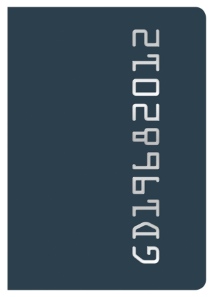by Ursula Kampmann
March 12, 2013 – In the mid 60s the world of money was changing. From 1965 to 1967 the firms issuing credit cards had raised from 75 to 1,500. In 1967 a whopping 15 million credit cards were circulating in the USA. As for cashless payment the USA were a great step ahead of the rest of the world. Nevertheless it would be an affiliated firm of the German banknote producer Giesecke & Devrient to affect the credit card technology decisively. Giesecke & Devrient now presents the history of that development in a lavishly illustrated book: ‘From Eurocheque Card to Mobile Security. 1968-2012’.
H. Böttge, T. Mahl, M. Kamp, Giesecke & Devrient. From Eurocheque Card to Mobile Security. Von der ec-Karte zu Mobile Security. 1968-2012. Regenstauf, Battenberg Gietl Verlag 2013. ISBN 978-3-86646-549-7. 49 euros.
In Germany everything started with a warranty card assuring the acceptance of the previously – at least with the business – rather unpopular cheques up to a certain sum. Giesecke & Devrient was not involved with this business since these cards were produced with a synthetic paper that was not part of their product range. Only when the eurocheque made its way in Europe, Giesecke & Devrient embarked upon it by establishing their own branch in 1970 which was to deliver relevant research under the name of Gesellschaft für Automation und Organisation (GAO).
The bilingual and sumptuously designed book illustrates what innovations have been realised in that field thanks to the firm’s knowhow. Challenges like drawing money from EC cashpoints created completely new systems. Giesecke & Devrient patented numerous inventions like e.g. laser personalisation and Smartcards. The book tells vividly what machines do the encoding, how the smartcards are being produced, and how the experience with eurocheque cards influenced upon the production of credit cards, phone cards, IDs, and other kind of cards featuring information.
A very impressive detail of modern history of technology has been published. It takes us through the various steps of cashless payment in quick motion, it shows instruments that we would use or are still using in our everyday life without spending much thought about the complex technology behind it.
Giesecke & Devrient offers thus – for the third time – a history of the firm that is coincidentally an excellent kind of PR for this worldwide operating company. At the same time they ensure a valuable chapter in the development of payment for future generations.
Thus we can call the engagement that has led to the book nothing else than worth of imitation. We definitely would like to see more books preserving for future generation the achievements of firms in the field of money production.
You may order this book here.
Here you can find the other volumes of the corporate history of Giesecke & Devrient.
And this is the official website of Giesecke & Devrient.





